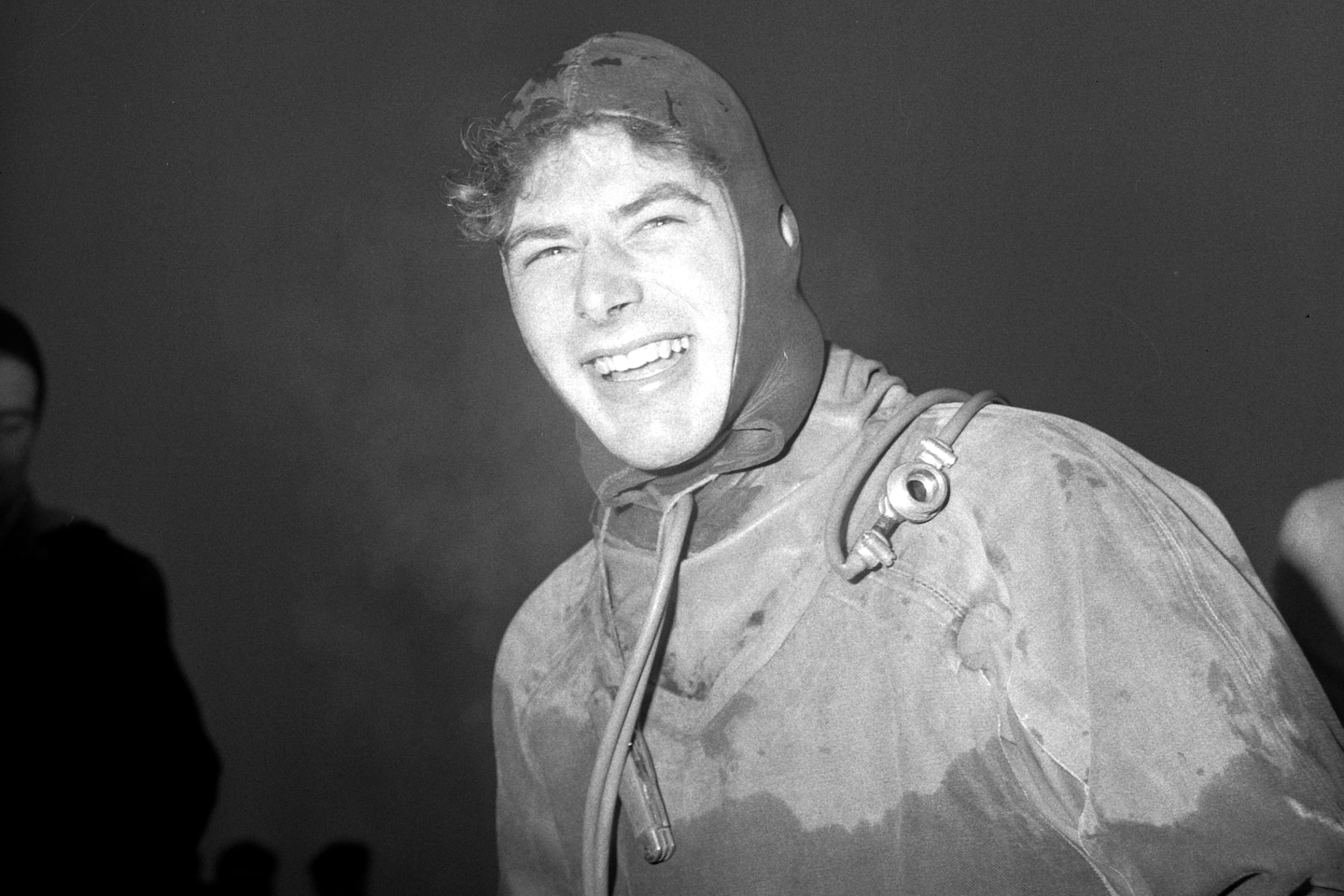Mr. Keller’s death was announced in a statement by his family. No cause was given.
The dive off California’s Santa Catalina Island on Dec. 3, 1962, to 1,020 feet (311 meters) was seen as an important step in experiments seeking to overcome decompression sickness known as “the bends,” a potentially fatal condition caused by bubbles of inert gas such as nitrogen forming in divers’ bloodstreams during rapid ascent from depth.
Mr. Keller used a new cocktail of gases intended to lessen the risks of the bends. The formula was never disclosed publicly, but it is credited with contributing critical data toward the development of the current mix — nitrogen, oxygen and helium — used in different proportions depending on the depth of the dive and other factors.
Mr. Keller’s diving companion, Peter Small, a British journalist and co-founder of the British Sub Aqua Club, did not survive the ascent in the cylindrical Atlantis diving bell because of decompression complications. Mr. Keller fell unconscious during the ascent and came close to death.
One of the backup divers on the support ship Eureka, Chris Whittaker, a 19-year-old from Britain studying at the University of California at Los Angeles, also died trying to rescue them. Whittaker’s body was never found.
Mr. Keller’s record “saturation dive,” as it is known to divers, also led to major scientific and technological advances, including improvements to deep-sea diving suits. Saturation diving is staying under the surface for periods long enough to bring the body’s tissues into equilibrium with the partial pressures of the inert components of the breathing gas.
Mr. Keller’s later research into decompression chambers brought improvements in naval medical facilities in the United States and Britain.
His depth record stood until 1975. The current record for a saturation dive was set by divers from the French entity Compagnie Maritime d’Expertises with its Hydra V111 bell, which reached a depth of nearly 1,751 feet in the Mediterranean in 1988. (The scuba diving depth record of 1,090 feet was set by the Egyptian Ahmed Gabr in the Red Sea in 2014, when he took 12 minutes to dive but nearly 15 hours to return to the surface to offset decompression).
Part of the preparation for Mr. Keller’s historic dive was made at a high-pressure laboratory tank run by the Navy Experimental Diving Unit at the Washington Navy Yard on the Anacostia River.
After he reached the continental shelf off the California coast, Mr. Keller slipped through a hatch in the diving bell to plant Swiss and U.S. flags. But the flags became caught in his breathing apparatus, and he barely made it safely back inside the bell.
Shell Oil financed the expedition and, in return, received access to his until-then secret technology, notably his “cocktail” of gases to reduce decompression sickness, which helped make the company a leader in offshore oil exploration.
Because of the two deaths during the dive, some U.S. media dubbed Mr. Keller “Hannes Killer” and criticized him for not sharing details of his secret gas mixture with the wider scientific community.
Hannes Keller was born in Winterthur, near Zurich, on Sept. 20, 1934. He studied philosophy, mathematics and theoretical physics at the University of Zurich, where he met Albert Bühlmann, a Swiss physician who was developing ways of reducing divers’ risk of decompression sickness by mixing gases.
Fascinated by diving since his youth, Mr. Keller first tested the techniques in a submersible dive in Lake Zurich, where he reached a depth of 400 feet, and later in Lake Maggiore on the Swiss-Italian border, submerging to 728 feet.
After his record dive, Mr. Keller continued to develop underwater suits, watches and other equipment, before getting into the fledgling computer industry in the 1970s. In 1975, he built and sold his own line of computers, called Sesame.
He also developed his own software products, including among the first programs to provide automatic spell-checking and language translation. For a time, he also ran an online photograph and fine art museum and developed a Swiss-made watch named the Nautical.
With a wicked sense of humor, in the 1970s he created a mechanical sea monster, based on Loch Ness’s fabled Nessie, which would surface in the Urnersee lake in Switzerland to amuse or sometimes frighten tourists. He called it Urnie.
In retirement, he returned to another of his first loves, classical music, and became an amateur concert pianist, performing in Switzerland, Austria, Germany and the United States, where he was once a soloist under the renowned conductor Zubin Mehta.
In 2009, Mr. Keller was appointed to the advisory board of the Santa Barbara, Calif.-based Historical Diving Society USA.
Complete information on survivors was not immediately available.
Hillary Hauser, an American photojournalist and distinguished deep-sea scuba diver, writing in Diver Magazine in 2008, described Mr. Keller as “a person of extraordinary will to live life to the fullest, risking failure and even death.”
“Keller told me once, ‘I want to have an interesting life, that’s what I want,” added Hauser, whose husband, Dick Anderson, was the surviving rescue diver during Mr. Heller and Small’s record dive. “‘I am the man looking for the right mix of all things to get me into the depth of life … so at the end I can say it was worthwhile.’”



